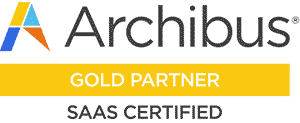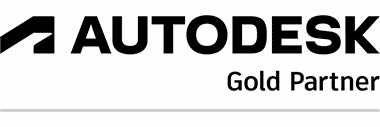What does that mean for U.S. workplaces? A lot. The impacts on businesses and organizations of all types are substantial. Managing the nuances of each act will require powerful technologies – such as an integrated workplace management system (IWMS) – to meet the stringent requirements geared toward sustainability.
What is the CLEAN Future Act?
The Climate Leadership and Environmental Action for our Nation’s (CLEAN) Future Act is legislation designed to ensure the U.S. achieves net-zero greenhouse gas pollution no later than 2050. The policy also includes an interim target of reducing 2005 levels of pollution by 50 percent no later than 2030.
These targets have been set by the United Nations Intergovernmental Panel on Climate Change, a global group that believes that all nations must work together to aggressively cut carbon pollution. The panel said achieving net-zero greenhouse gas pollution by 2050 will help the world avoid the most catastrophic consequences of climate change.
What is the LIFT America Act?
The Leading Infrastructure for Tomorrow’s (LIFT) America Act is legislation aimed at reducing energy and water usage in U.S. facilities, including hospitals, community drinking water plants, and schools.
These changes are meant to modernize infrastructure, fight the effects of climate change, and improve public health standards. The policy is designed to improve:
- Energy efficiency and clean energy
- Electric vehicle infrastructure
- Drinking water
- Broadband internet access
- Public health infrastructure
Impacts on U.S. Businesses and Organizations
The CLEAN Future and LIFT America acts will directly impact businesses and organizations by alternating building requirements and energy standards across the country. If passed, the CLEAN Future Act would require building owners to:
- Benchmark annual energy and water usage via the Environmental Protection Agency’s ENERGY STAR® Portfolio Manager® – this applies to buildings greater than 50,000 square feet and buildings already in compliance with local benchmarking ordinances are exempt
- Develop a model building energy code using ASHRAE 90.1
- Increase building energy performance standards
The LIFT America Act will place additional requirements on federally owned structures, including:
- Reduce average facility energy intensity by 2.5 percent each year (relative to their 2018 baseline)
- Reduce potable water consumption by 3 percent each year (relative to their 2007 baseline), for a total of 54 percent reduction by 2030
Increasing Sustainability with an IWMS
Many organizations struggle to find cost-effective ways to reduce their carbon footprint and ensure employee safety and wellness. Technology can streamline processes to effectively track and measure sustainability goals.
An integrated workplace management system (IWMS) platform, including one offered by Archibus, an iOFFICE + SpaceIQ product, makes it easier for organizations to comply with the more aggressive standards outlined by the CLEAN Future and LIFT America acts. A web-based IWMS platform can track key processes like energy and waste management, which helps organizations better understand the impact they have on the environment.
Organizations can utilize Archibus apps to align with their unique business needs, including:
- Sustainability Assessments: Regular sustainability assessments allow organizations to measure performance indicators, mitigate risk, and reduce their carbon footprint
- Energy Management: Many organizations have inefficient energy management practices that are difficult to find and cost them thousands of dollars each year – benchmarking, tracking, and management tools help control costs and increase sustainability
- Green Building: Whether companies must meet new legislation requirements for individual buildings or across their portfolio, the green building app will help them achieve those goals
- Waste Management: Efficient waste management systems allow organizations to improve health practices and minimize risks
- Emergency Preparedness: The right IWMS tools overlap with business continuity planning, helping organizations recover quickly in emergency situations
- Hazard Abatement: Identifying and abating indoor environmental hazards can be time-consuming, but this feature streamlines the process and keeps organizations safer
- Health & Safety: From workplace safety accidents to PPE, organizations can gain greater control over health and safety protocols
- Hazardous Materials: Quickly retrieving material safety information helps to protect building occupants and cut compliance costs
Where to start: Sustainability Assessments and Energy Management
Businesses and organizations don’t need to wait for the CLEAN Future and LIFT America acts to launch sustainability measures. IWMS technology makes the concept of environmental sustainability a reality by tracking, ranking, and documenting details on the condition and use of physical assets.
Manual evaluation using spreadsheets and other archaic methods are replaced by objective and systematic ways to identify and prioritize facility replacements, upgrades, and renovations based on environmental sustainability criteria.
Using data from a central repository in Archibus, building owners/managers can:
- Establish proactive sustainability processes that can improve operational efficiencies, enhance stakeholder work environments, and boost asset value
- Identify which assets should be repaired, renovated or replaced to achieve environmental efficiency goals or support an existing LEED™ or BREEAM® rating program
- Improve capital budgeting and planning capabilities by tracking costs and budgets associated with environmental deficiencies
- Increase efficiency of sustainability efforts by integrating assessments with work order management and by using a unified data repository
An energy management solution is also easy to implement in order to aggregate, evaluate, and optimize energy and utility spending decisions and reduce unnecessary consumption and costs. With Archibus, organizations can:
- Evaluate consumption patterns to help renegotiate rates and consolidate energy providers
- Reduce business risk and exposure to changes in energy costs or carbon emissions regulation thought what-if analyses
- Track energy expenditures against a business plan or objective benchmarks
Article written by Fred Kraus, Sr. Director Product, Archibus
iOFFICE + SpaceIQ



